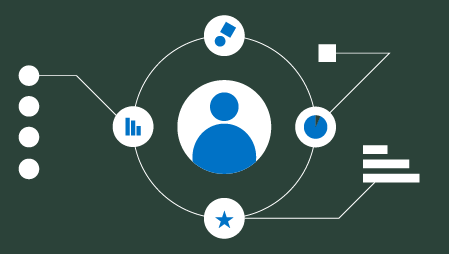Ready to learn Data Science? Browse Data Science Training and Certification courses developed by industry thought leaders and Experfy in Harvard Innovation Lab.
Every day, humans create more than 2.5 exabytes — or 2.5 billion gigabytes — of data. It comes from many different sources, and we use it for just as many things. Smart, connected technologies like mobile and IoT devices generate a variety of information and media. Meanwhile, social networks, online communities, and conventional experience channels create multitudes of user data and preferences. And these are just a couple of the most common data sources in use today.
We can use all this data to build more complex, relevant and efficient business strategies and campaigns. But there’s one particular form of data — or information — that is perhaps more valuable than any of the others, and yet we’re utilizing it the least.
What Are Spatial Analytics?
Spatial data and analytics are vital to problem-solving and decision-making processes, especially in a local environment. This type of information can be tied back to every other form of data, and it helps to bring a context-heavy tone to everything.
Photos and videos can include geographic coordinates to understand exactly where they were captured. Customer and user experience information can be tied to a local shop or address. Even partner and vendor correspondence can be tracked to a particular region.
In one area, for instance, you might notice an uptick in customers buying a particular product. Spatial information can determine exactly where, how far those boundaries reach and even why that area is so lucrative. It helps to reveal patterns, opportunities, predictive details and even risks.
It is so crucial that McKinsey released a study that shows location-based sensor adoption and IoT devices will have a rising economic impact of more than $11 trillion by 2025. To put it bluntly, location and spatial data are becoming that much more crucial to smooth and successful business operations.
Why Should I Measure Spatial Analytics?
In light of that, here are three reasons why spatial analytics could prove to be beneficial to the future of your business and, as such, should be a part of your data strategy.
1. To Utilize Location-Based and Contextual Business Mapping
One of the most obvious use cases for spatial data is to build a contextual business map or explore audience metrics through more visual representations. This helps provide informative, relevant and spatial visualizations of your current business operations.
It leads to informed decision-making, especially regarding particular demographics or local audiences. It can also help you highlight nearby competitors or partners, along with their circle of influence. If, for example, you see that your competition has a strong foothold in a specific area, you can do more to reach that audience while also understanding what it is they want and how you can achieve your set goals.
Since a lot of this sounds vague, let’s break it down using a more relatable example.
Let’s say you’re planning to open an additional — or fresh — local branch. Through the use of geomapping, you can determine the exact locations or addresses where your customers might be interested in a particular product or good. You can do this using historical, current and contextual data relating to you, your market and your competitors. So, you can safely enter a new market or expand, armed with relevant, accurate and more reliable information.
2. To Understand Past, Present, and Future Opportunities
As is typical with most data streams, you instantly gain access to a wealth of past and present details when you consider spatial data.
You can use historical data to ensure you learn from past mistakes and or decisions. However, there’s another side to the equation that we often overlook: predictive analytics. You can use a variety of information and data streams to help discern or at least accurately predict what is going to happen with a particular event, decision or business move.
Want to be sure you’re entering the right local markets at the opportune time? Confirm that a particular area has enough customers to support your offerings? Make sure the competition isn’t too stiff or becoming too stiff?
Spatial analytics is about more than just a location or related details — it entails everything about a market segment you’re invested in. With the proper setup, you can be prepared for just about anything that crops up, whether it’s in the past, present or future.
In healthcare, geo-mapping and spatial data can be used to determine disease or ailment patterns and trends. This would effectively allow health officials to take action against a particularly nasty virus or health issue, cutting the problem off at the source.
3. To Visualize Everything
In its raw form, data often tends to be nothing more than lines of code, numbers or even statistics. But hopefully, that’s not the type of information you’re looking at, because it’s not going to have the most impact on your strategies.
To unlock the potential of data, you build and generate data visualizations. You already know what they are simply through charts, graphs, and infographics most commonly shared in business and strategy meetings. However, spatial data unlocks a whole slew of new data visualization options, especially regarding location and mapping. This, in turn, helps you better understand and consider spatial strategies — the art of discovering where places and locations fit within your organization and future strategy.
This is separate from contextual business mapping because the visualizations are used for more than just understanding a local area. It’s more about understanding the datasets you have, as well as how your business can leverage them or make them relevant to your needs.
Understanding Your Audiences and Business
In the end, spatial data is about more than just understanding local trends and audiences — it clues you into how your business or brand fits within a particular market. You can see exactly what kind of influence your organization; products or services have, as well as how that relates to the surrounding community.
Maybe there’s more competition in a particular area that is more successful than you? The “where,” believe it or not, can help you pin down who that is, how it’s happening and how far their reach stretches.
Excluding rivals, spatial data will present more exciting and fresh opportunities for your business, as well as provide the necessary performance data you need to measure current progress. You just cannot hope to survive in today’s landscape without some form of spatial information and data collection.



